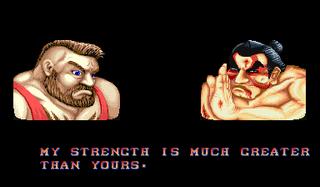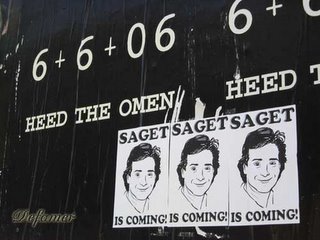Street Fighter II: A Retrospective.
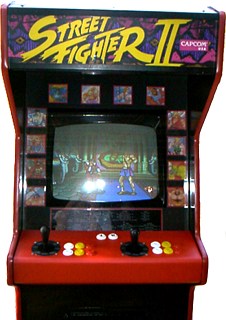
Note: I'm writing a article for www.popmatters.com on Street Fighter II. Here's the rough draft. And yes, I'm a nerd.
In high school, I repeatedly swore to my friends, with a straight face, that I would fall down on my knees and marry the girl that defeated me in Street Fighter II, no questions asked. In retrospect, it probably was a sad commentary about my priorities that the sole value I looked for in a potential mate was her skill in an arcade fighting game, (and a reason why I’m still single), but the truth is, I never truly believed that statement anyway.
I was saving myself for Chun-Li.

---
If Street Fighter II hit the arcades relatively quietly in 1991, it was because arcades themselves were slumping towards the point of irrelevancy. The Golden Age of the sweaty, dark, punk-rockishly cool arcade with snaking lines of teens waiting to play Missile Command and Galaga had gone the way of disco; supplanted by shiny happy “Family Fun Centers” via Showbiz Pizza or Chuck E. Cheeses or old arcades revamped as “safe places.” I distinctly remember the depression I felt after discovering my own favorite mall-rat arcade dungeon had transformed into a Day-Glo bright Skee-Ball and ticket game Hell. The target market evidently became 7-year olds boys and soccer moms.

The Old School Arcade at the height of its glory. Love the hats.
To make matters worse, powerful new systems like the Sega Genesis and the Super Nintendo closed the technology gap between arcades and home systems, making it less attractive to head to the mall to pay 25 cents for three minutes of the mediocre dreck filling Aladdin’s Castles and struggling mom-and-pop arcades.
The only thing resembling innovation in arcade games were found in the crude 3D graphics of driving games like Hard Drivin’ and S.T.U.N.Runner.
Sure, there fighting games o’ plenty at the arcades in the late 80’s and early 90’s, but cooperative beat-em’-ups like Bad Dudes, Teenage Mutant Ninja Turtles, and Final Fight, were hardly what people think of today as fighting games. Most of these repetitive, button-mashing Double Dragon clones were admittedly mindless fun, but advancing through them had less to do with skill than feeding the machine with a steady diet of quarters to mow through endless waves of drone-like enemies.

Ryu was always putting his fingers in electric sockets and so forth.
----
I can count on one hand the number of times video games have sparked a sensation of sublime transcendence I can only label The Moment, when one is struck suddenly by the blinding genius and flawlessness of something never experienced before. (If that sounds slightly crazy, ask a rock musician about the first time they heard the guitar riff from “Smells Like Teen Spirit”, or a baseball player after hitting his first home run.)
One of those rare Moments came to me shortly after I slid a quarter into a Street Fighter II machine for the first time. It was my first Dragon Punch.
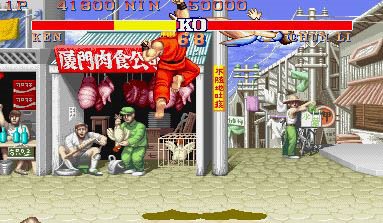
The Dragon Punch gave Ken mad ups, yo!
“Shoruyken!” shouted Ken, the blonde shaggy-haired fighter I had selected, as he rose up suddenly from the ground and threw a savage uppercut, flying seemingly halfway across the screen.
What the hell was that? And more importantly, how could I do that again? It took some experimentation and a little luck to figure it out, but once I mastered the Dragon Punch, I was more than hooked, I was entranced.
Soon, I found that not only were there more moves of Ken’s to be discovered, but seven other characters from around the world, each with their own back story and own set of specialized moves: Ryu, Ken’s stoic Japanese counterpart; the spikey-headed U.S. military man Guile; a pot-bellied, but nimble Japanese sumo wrestler E. Honda; Blanka, a hairy green…thing, raised by wolfs in the jungles of Brazil, a fire-breathing Indian mystic called Dhalsim; a burly bear of a Soviet wrestler named Zangief; and a sexy Chinese woman with a schoolgirl laugh named Chun Li.
There were also four bosses, including my favorite, Vega, a flamboyantly effete (he wore a mask to protect his pretty face) metrosexual Spanish matador with Wolverine-like claws who’d jump from the walls with a high-pitched shriek.
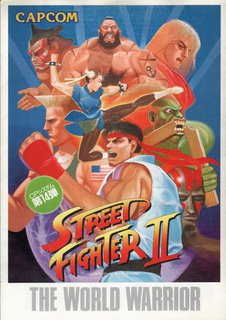
On a side note, while Street Fighter II’s cast of characters could be accused of being one-dimensional stereotypes, the fact that 6 out of the 8 characters were either non-white, male, or American was a revolutionary idea in video games. In those pre-Lara Croft days, female protagonists besides the skirt-wearing Princess Peach in the Mario games were rare, and you’d come up empty trying to think of any other game, past or present, featuring a playable hero from India or South America. (You could also argue about the philosophical diversity of some of the characters, but that might be a stretch for a game in which differences were solved with one another by throwing fireballs.)
But never mind its political correctness, as a slightly jaded 14-year old arcade connoisseur; fun was the best thing I could think of to say about Street Fighter II. During that aforementioned first session of gaming, I practically refused to take my hand off the eight-way joystick. After a half-an-hour, I kept telling my poor waiting grandmother “Just one more game!” as well as the dozen or so people who were crowded around watching or waiting their turn.
“Hey man, some other people want to play,” growled one teen as I dropped in yet another quarter.
Of course, as we would soon learn, Capcom had already equipped Street Fighter II with the capability to allow others to ‘boot’ others from the machine. And soon a new arcade culture was born.
No one knew his name, but everyone who played Street Fighter II seriously in my neck of the woods knew of his exploits. He was simply, “The Kenney Shoes Guy.” And on his seemingly countless lunch and smoke breaks, he would walk from his store to the mall arcade everyday in the same starched white dress shirt and brown Kenney branded loafers to quietly destroy all the would-be competition in Street Fighter II. Every time we saw him, we’d collectively groan; he was like Clint Eastwood in all those old Westerns, he didn’t say much, but we knew we were dead.
Because of the competitive nature of Street Fighter II, a new unwritten code of conduct had emerged. At any time, a second player could put in a quarter and press the start button. Doing so automatically interrupted a one player game with the message: “Here Comes A New Challenger!” Then the two players fights one-on-one, mano-y-mano, in a best of three round match. If pride wasn’t enough of an incentive to win, the game allowed the winner of the match to stay and the loser was done; the arcade equivalent of pick-up games of basketball in the YMCA.
The code usually worked like this: When you approached a SFII machine with two or more people already battling it out, you placed a quarter somewhere in a crease in the cabinet, as your placeholder in line. When your turn was up, you’d grab your quarter and fight your opponent. If you lost, you’d have to go to the back of the line. Win and you could potentially play on one quarter for the rest of the day.
(Interestingly enough, a version of Street Fighter II being released next month on Xbox Live for the 360 features Quarter Matches, a self-described “homage to the arcade tradition” that allows players to display virtual quarters online to “buy” into matches.)
Many players also insisted on an unspoken code of conduct in gameplay itself. Those who used throws often were labeled “cheap,” and even some who played defensively or conservatively (like me) were accused of foul play.
That’s what made “Kenney Shoes Guy” so dangerous (and reviled). His Street Fighter II philosophy was Machiavellian, and he didn’t care if had to use all throws, if it meant winning the game.
While I waited in line, I became my own Phil Jackson, drawing up a gameplan and strategies in my head I could use to beat him. Do I bring Guile, and slow him down with constant jab-strength Sonic Booms while charging up my scissor kicks, or do I play aggressive and use Blanka?
This sort of depth and competition in arcade games was unheard of.
It wouldn’t be an overstatement to say that my friends and I were obsessed with Street Fighter II. We endlessly dissected each characters’ strengths and weaknesses and special moves (The Blanka Ball, we agreed, was cool, but left you too vulnerable to attack), read about Street Fighter II strategy in magazines, drew sketches in our notebooks (since we were 14 year old boys, they mostly involved Chun-Li,), nonsense phrases like “Yoga Fire!” and “Sonic Boom!” became part of our everyday vernacular and of course, we played the game until our fingers bled.
I hovered around the Street Fighter II machine in a Pizza Hut three blocks from my house at least three or four days a week, leaving the controls greasy from the breadsticks I’d wolf down in between matches.
When word arrived that a brand new edition Street Fighter II: Champion Edition had arrived at a Fuddrucker’s Restaurant across town, a friend and I trekked the five miles there on foot.
Two years and four further editions later, the Street Fighter II magic was beginning to run out. It didn’t help things that Capcom bled the series dry with constant updates and quasi sequels and tired prequels that reeked of cash-ins. After the series arguably peaked with Super Street Fighter II Turbo, imitators like Mortal Kombat, and Fatal Fury, and later, Tekken and Virtual Fighter, knocked SFII off its considerable throne.
As of today, Capcom has released over 10 Street Fighter arcade games, none substantially improving from the original. The utterly retched 1994 Jean Claude Van Damme movie adaptation doesn’t exactly enhance Street Fighter’s legacy either (or even worse, the Street Fighter: The Movie game for Playstation 1).
Nonetheless, many still remember the original as the Best Arcade Game Ever, and for me personally, well… I’m still waiting for a female challenger. This ring in my pocket is getting a bit musty.


Note: I'm writing a article for www.popmatters.com on Street Fighter II. Here's the rough draft. And yes, I'm a nerd.
In high school, I repeatedly swore to my friends, with a straight face, that I would fall down on my knees and marry the girl that defeated me in Street Fighter II, no questions asked. In retrospect, it probably was a sad commentary about my priorities that the sole value I looked for in a potential mate was her skill in an arcade fighting game, (and a reason why I’m still single), but the truth is, I never truly believed that statement anyway.
I was saving myself for Chun-Li.

---
If Street Fighter II hit the arcades relatively quietly in 1991, it was because arcades themselves were slumping towards the point of irrelevancy. The Golden Age of the sweaty, dark, punk-rockishly cool arcade with snaking lines of teens waiting to play Missile Command and Galaga had gone the way of disco; supplanted by shiny happy “Family Fun Centers” via Showbiz Pizza or Chuck E. Cheeses or old arcades revamped as “safe places.” I distinctly remember the depression I felt after discovering my own favorite mall-rat arcade dungeon had transformed into a Day-Glo bright Skee-Ball and ticket game Hell. The target market evidently became 7-year olds boys and soccer moms.

The Old School Arcade at the height of its glory. Love the hats.
To make matters worse, powerful new systems like the Sega Genesis and the Super Nintendo closed the technology gap between arcades and home systems, making it less attractive to head to the mall to pay 25 cents for three minutes of the mediocre dreck filling Aladdin’s Castles and struggling mom-and-pop arcades.
The only thing resembling innovation in arcade games were found in the crude 3D graphics of driving games like Hard Drivin’ and S.T.U.N.Runner.
Sure, there fighting games o’ plenty at the arcades in the late 80’s and early 90’s, but cooperative beat-em’-ups like Bad Dudes, Teenage Mutant Ninja Turtles, and Final Fight, were hardly what people think of today as fighting games. Most of these repetitive, button-mashing Double Dragon clones were admittedly mindless fun, but advancing through them had less to do with skill than feeding the machine with a steady diet of quarters to mow through endless waves of drone-like enemies.

Ryu was always putting his fingers in electric sockets and so forth.
----
I can count on one hand the number of times video games have sparked a sensation of sublime transcendence I can only label The Moment, when one is struck suddenly by the blinding genius and flawlessness of something never experienced before. (If that sounds slightly crazy, ask a rock musician about the first time they heard the guitar riff from “Smells Like Teen Spirit”, or a baseball player after hitting his first home run.)
One of those rare Moments came to me shortly after I slid a quarter into a Street Fighter II machine for the first time. It was my first Dragon Punch.

The Dragon Punch gave Ken mad ups, yo!
“Shoruyken!” shouted Ken, the blonde shaggy-haired fighter I had selected, as he rose up suddenly from the ground and threw a savage uppercut, flying seemingly halfway across the screen.
What the hell was that? And more importantly, how could I do that again? It took some experimentation and a little luck to figure it out, but once I mastered the Dragon Punch, I was more than hooked, I was entranced.
Soon, I found that not only were there more moves of Ken’s to be discovered, but seven other characters from around the world, each with their own back story and own set of specialized moves: Ryu, Ken’s stoic Japanese counterpart; the spikey-headed U.S. military man Guile; a pot-bellied, but nimble Japanese sumo wrestler E. Honda; Blanka, a hairy green…thing, raised by wolfs in the jungles of Brazil, a fire-breathing Indian mystic called Dhalsim; a burly bear of a Soviet wrestler named Zangief; and a sexy Chinese woman with a schoolgirl laugh named Chun Li.
There were also four bosses, including my favorite, Vega, a flamboyantly effete (he wore a mask to protect his pretty face) metrosexual Spanish matador with Wolverine-like claws who’d jump from the walls with a high-pitched shriek.

On a side note, while Street Fighter II’s cast of characters could be accused of being one-dimensional stereotypes, the fact that 6 out of the 8 characters were either non-white, male, or American was a revolutionary idea in video games. In those pre-Lara Croft days, female protagonists besides the skirt-wearing Princess Peach in the Mario games were rare, and you’d come up empty trying to think of any other game, past or present, featuring a playable hero from India or South America. (You could also argue about the philosophical diversity of some of the characters, but that might be a stretch for a game in which differences were solved with one another by throwing fireballs.)
But never mind its political correctness, as a slightly jaded 14-year old arcade connoisseur; fun was the best thing I could think of to say about Street Fighter II. During that aforementioned first session of gaming, I practically refused to take my hand off the eight-way joystick. After a half-an-hour, I kept telling my poor waiting grandmother “Just one more game!” as well as the dozen or so people who were crowded around watching or waiting their turn.
“Hey man, some other people want to play,” growled one teen as I dropped in yet another quarter.
Of course, as we would soon learn, Capcom had already equipped Street Fighter II with the capability to allow others to ‘boot’ others from the machine. And soon a new arcade culture was born.
No one knew his name, but everyone who played Street Fighter II seriously in my neck of the woods knew of his exploits. He was simply, “The Kenney Shoes Guy.” And on his seemingly countless lunch and smoke breaks, he would walk from his store to the mall arcade everyday in the same starched white dress shirt and brown Kenney branded loafers to quietly destroy all the would-be competition in Street Fighter II. Every time we saw him, we’d collectively groan; he was like Clint Eastwood in all those old Westerns, he didn’t say much, but we knew we were dead.
Because of the competitive nature of Street Fighter II, a new unwritten code of conduct had emerged. At any time, a second player could put in a quarter and press the start button. Doing so automatically interrupted a one player game with the message: “Here Comes A New Challenger!” Then the two players fights one-on-one, mano-y-mano, in a best of three round match. If pride wasn’t enough of an incentive to win, the game allowed the winner of the match to stay and the loser was done; the arcade equivalent of pick-up games of basketball in the YMCA.
The code usually worked like this: When you approached a SFII machine with two or more people already battling it out, you placed a quarter somewhere in a crease in the cabinet, as your placeholder in line. When your turn was up, you’d grab your quarter and fight your opponent. If you lost, you’d have to go to the back of the line. Win and you could potentially play on one quarter for the rest of the day.
(Interestingly enough, a version of Street Fighter II being released next month on Xbox Live for the 360 features Quarter Matches, a self-described “homage to the arcade tradition” that allows players to display virtual quarters online to “buy” into matches.)
Many players also insisted on an unspoken code of conduct in gameplay itself. Those who used throws often were labeled “cheap,” and even some who played defensively or conservatively (like me) were accused of foul play.
That’s what made “Kenney Shoes Guy” so dangerous (and reviled). His Street Fighter II philosophy was Machiavellian, and he didn’t care if had to use all throws, if it meant winning the game.
While I waited in line, I became my own Phil Jackson, drawing up a gameplan and strategies in my head I could use to beat him. Do I bring Guile, and slow him down with constant jab-strength Sonic Booms while charging up my scissor kicks, or do I play aggressive and use Blanka?
This sort of depth and competition in arcade games was unheard of.
It wouldn’t be an overstatement to say that my friends and I were obsessed with Street Fighter II. We endlessly dissected each characters’ strengths and weaknesses and special moves (The Blanka Ball, we agreed, was cool, but left you too vulnerable to attack), read about Street Fighter II strategy in magazines, drew sketches in our notebooks (since we were 14 year old boys, they mostly involved Chun-Li,), nonsense phrases like “Yoga Fire!” and “Sonic Boom!” became part of our everyday vernacular and of course, we played the game until our fingers bled.
I hovered around the Street Fighter II machine in a Pizza Hut three blocks from my house at least three or four days a week, leaving the controls greasy from the breadsticks I’d wolf down in between matches.
When word arrived that a brand new edition Street Fighter II: Champion Edition had arrived at a Fuddrucker’s Restaurant across town, a friend and I trekked the five miles there on foot.
Two years and four further editions later, the Street Fighter II magic was beginning to run out. It didn’t help things that Capcom bled the series dry with constant updates and quasi sequels and tired prequels that reeked of cash-ins. After the series arguably peaked with Super Street Fighter II Turbo, imitators like Mortal Kombat, and Fatal Fury, and later, Tekken and Virtual Fighter, knocked SFII off its considerable throne.
As of today, Capcom has released over 10 Street Fighter arcade games, none substantially improving from the original. The utterly retched 1994 Jean Claude Van Damme movie adaptation doesn’t exactly enhance Street Fighter’s legacy either (or even worse, the Street Fighter: The Movie game for Playstation 1).
Nonetheless, many still remember the original as the Best Arcade Game Ever, and for me personally, well… I’m still waiting for a female challenger. This ring in my pocket is getting a bit musty.

